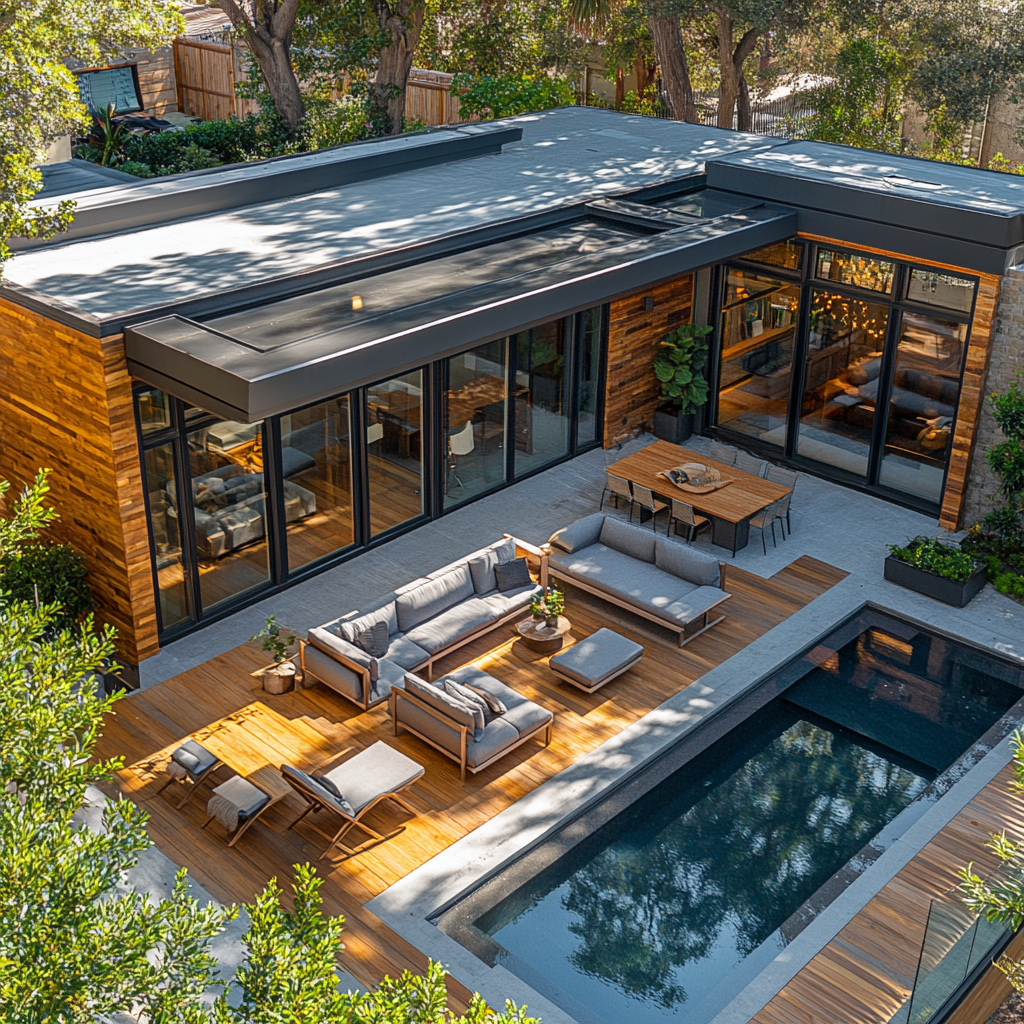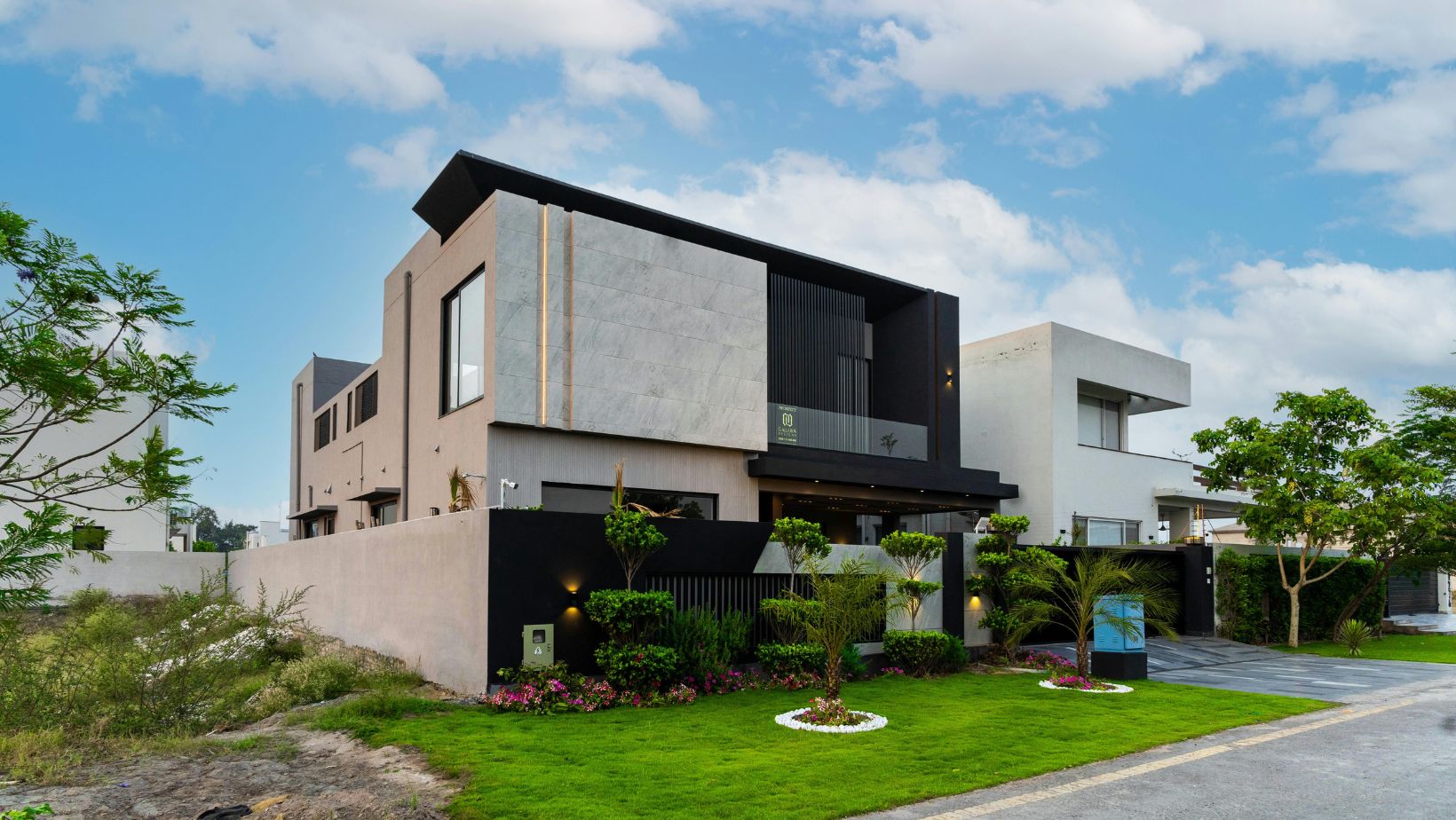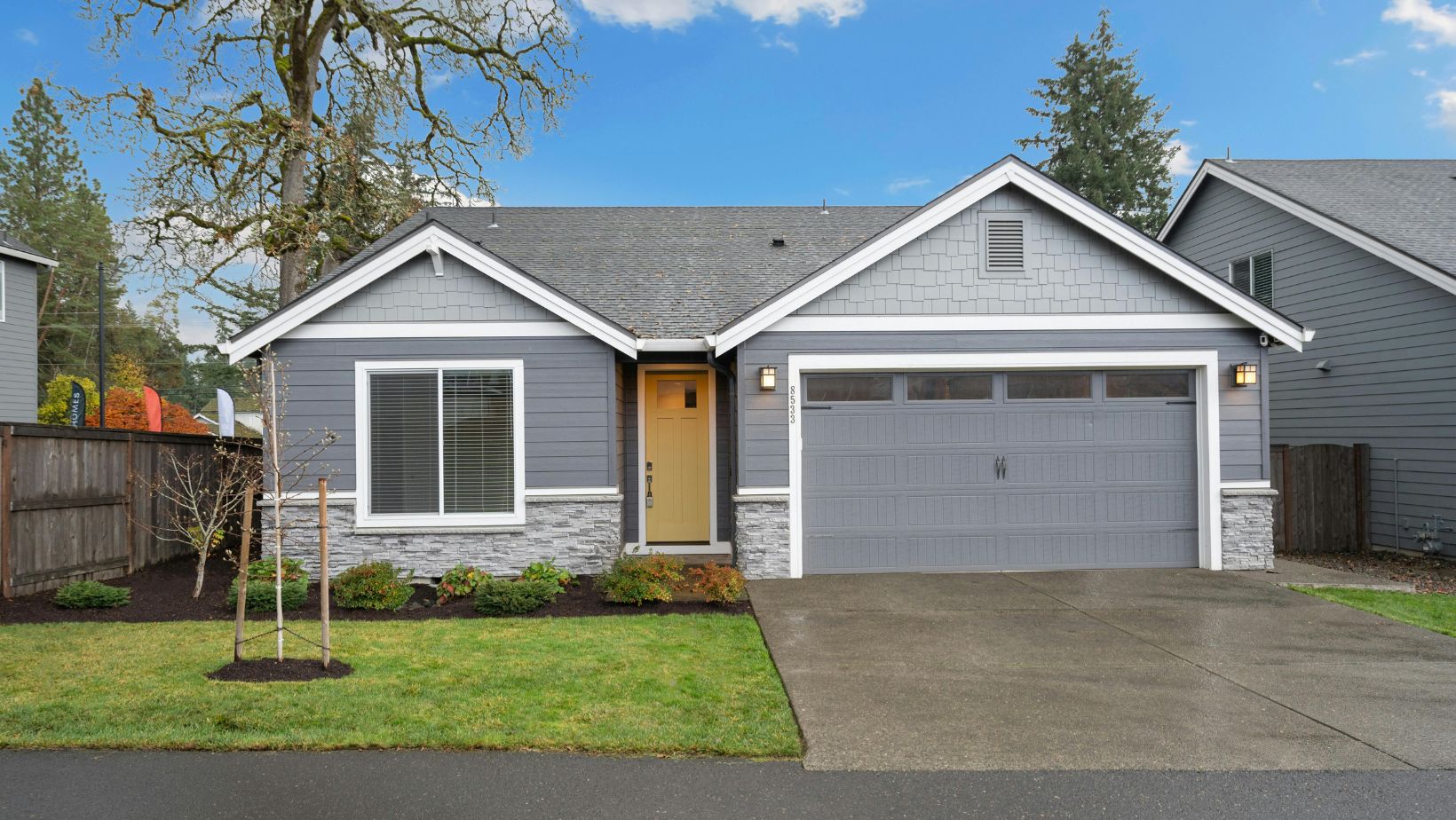The sleek aesthetics of contemporary architecture often come with practical challenges that homeowners discover only after moving in. While residential flat roof repair issues frequently top the list of maintenance headaches, innovative approaches are transforming this necessary upkeep into opportunities for architectural enhancement. What begins as a search for emergency flat roof repair services can evolve into a design journey that adds value, functionality, and visual appeal to your home’s most overlooked surface. Today’s architectural solutions approach roofing not merely as weather protection but as a fifth façade offering untapped potential for living space, energy efficiency, and aesthetic expression.
The Architectural Truth About Horizontal Surfaces
Let’s be honest – flat roofs have developed a somewhat notorious reputation among homeowners. They’re often perceived as leak-prone problem areas rather than design assets. This reputation isn’t entirely undeserved, as traditional flat roof materials like built-up bitumen sometimes struggle against pooling water, freeze-thaw cycles, and UV degradation.
Think of traditional flat roofing like an old flip phone – functional in its time but woefully inadequate compared to today’s technology. Modern flat roof systems, by contrast, resemble smartphones in their multifunctionality and improved performance. The evolution from simple waterproofing to comprehensive roofing systems has transformed how architects approach these horizontal planes, creating opportunities where problems once dominated.
Material Evolution: Beyond the Bucket Brigade
The first step in transforming flat roof repair from dreaded expense to worthwhile investment involves understanding today’s material options. Modern alternatives have rendered the stereotype of the constantly leaking flat roof increasingly obsolete:
- Single-ply membranes offer exceptional waterproofing with minimal seaming vulnerability, dramatically reducing the most common failure points in traditional systems.
- Modified bitumen technologies combine traditional reliability with modern application methods that ensure more consistent installation quality.
- Liquid-applied membranes conform perfectly to unusual roof geometries, eliminating the adaptation challenges that often create vulnerability in flat roof repairs.
- Advanced drainage systems with primary and secondary networks provide redundancy that prevents the standing water issues responsible for most flat roof failures.
These materials represent not just improved waterproofing but entirely new conceptual approaches to flat roof design and maintenance. Each offers distinct aesthetic and functional possibilities that extend well beyond mere weather protection, allowing architects to reconsider these spaces as valuable assets rather than necessary compromises.
From Maintenance Headache to Design Highlight
The most exciting developments in flat roof architecture involve reimagining these spaces as integral to the home’s design language rather than simply utilitarian surfaces requiring periodic repair:
Green roof systems transform maintenance liabilities into living assets that manage stormwater, provide insulation, and create visual interest visible from upper floors or adjacent properties.
Roof deck conversions reclaim previously unusable square footage, effectively expanding homes without increasing their footprint – particularly valuable in urban settings with limited expansion options.
Solar integration transforms flat roofs into energy-producing assets, with modern systems designed for seamless incorporation into the architectural envelope rather than appearing as awkward afterthoughts.
Reflective materials and intelligent drainage create microclimates that enhance comfort in adjacent spaces while dramatically reducing cooling loads and associated energy costs.
The architectural approach to flat roof areas resembles urban redevelopment – identifying underutilized space, reimagining its potential, and transforming perceived problems into community assets. The rooftop that once represented only maintenance concerns becomes a canvas for architectural expression and practical improvement.
The Economics of Elevation: Cost Considerations
Budget concerns naturally arise when discussing architectural approaches to flat roof improvements. Several factors make these investments more financially accessible than many homeowners realize:
Long-term maintenance savings often offset initial premium costs for architectural roofing systems, with high-performance materials requiring significantly less frequent repair than traditional options.
Energy efficiency improvements from properly designed flat roof systems deliver ongoing returns through reduced heating and cooling expenses, particularly in extreme climate regions.
Usable space creation through roof deck conversion typically costs 30-50% less per square foot than ground-level additions requiring new foundations and extensive site work.
Property value increases from well-executed architectural flat roof improvements generally exceed project costs, particularly when incorporating visible design elements or usable outdoor spaces.
Like investing in quality tools rather than repeatedly purchasing disposable versions, architectural approaches to flat roofing deliver superior long-term value despite potentially higher initial costs. The financial analysis becomes even more favorable when considering the avoided expenses of emergency flat roof repairs that often accompany aging traditional systems.
Design Integration: Aesthetic Considerations
Beyond practical concerns, truly successful flat roof transformations integrate seamlessly with the home’s overall design language. Several approaches help ensure cohesive results:
Material continuity between vertical and horizontal surfaces creates visual flow that incorporates the roof into the architectural composition rather than treating it as a separate element.
Visibility considerations determine appropriate investment levels in aesthetic elements, with roofs visible from living spaces or adjacent properties justifying greater design attention than those completely concealed.
Transitional spaces like partial overhangs, clerestory windows, and roof access points create opportunities for expressing the relationship between interior and exterior, transforming functional elements into design features.
These design strategies transform flat roof repair from merely solving problems to enhancing the architectural experience. The difference resembles upgrading from functional transportation to a vehicle that delivers both performance and pleasure – the primary purpose remains the same, but the experience improves dramatically.
Practical Implementation: Working With Professionals
Translating architectural vision into successful flat roof implementation requires collaboration with knowledgeable partners. Several approaches enhance this critical relationship:
Clear communication about both performance expectations and design aspirations helps roofing specialists understand the full scope of project goals beyond mere weather protection.
Phased implementation allows for spreading costs over time while working toward a cohesive final vision, particularly valuable for homeowners balancing immediate repair needs with longer-term design ambitions.
Material sample evaluation in actual site conditions provides more accurate information about appearance and performance than showroom displays or catalog images alone.
The collaborative process resembles orchestrating a complex meal rather than simply following a recipe – each participant contributes specialized expertise toward a harmonious result that exceeds what any individual could accomplish alone. The most successful flat roof transformations emerge from this type of thoughtful collaboration between design vision and technical implementation.
Future-Proofing: Planning For Tomorrow
Perhaps the most valuable architectural approach to flat roofing involves anticipating future needs rather than merely addressing current conditions. Several strategies support this forward-looking perspective:
Infrastructure integration during initial repair or replacement saves substantial costs compared to retrofitting, particularly for elements like electrical conduits for future lighting or solar installation.
Load capacity considerations should anticipate potential future uses rather than merely meeting minimum code requirements, providing flexibility for later roof deck conversion or equipment installation.
Access planning that incorporates convenient, safe routes to flat roof areas makes future maintenance simpler and less costly while enabling potential recreational use.
Like urban planning that anticipates growth and changing needs, thoughtful flat roof design accommodates both current requirements and future possibilities. This approach transforms roof repair from a reactive necessity to a proactive investment in the home’s long-term utility and value.
The View From Above
Ultimately, architectural approaches to flat roof repair deliver benefits extending far beyond mere weather protection. By reconceptualizing these horizontal surfaces as opportunities rather than liabilities, homeowners can transform maintenance necessities into valuable improvements that enhance both daily living and long-term property value.
The flat roof represents one of architecture’s most underutilized canvases – a horizontal plane often forgotten until problems arise, yet offering remarkable potential for enhancement. By approaching repairs with design sensibility rather than merely technical solutions, these surfaces evolve from maintenance challenges into architectural assets that contribute to the home’s function, efficiency, and beauty.




More Stories
How Material Innovation Is Influencing Contemporary Design Objects
How Automation and Smart Tools Are Transforming Architectural Practice
Why Turnkey Sweepstakes Software Is Catching On Fast